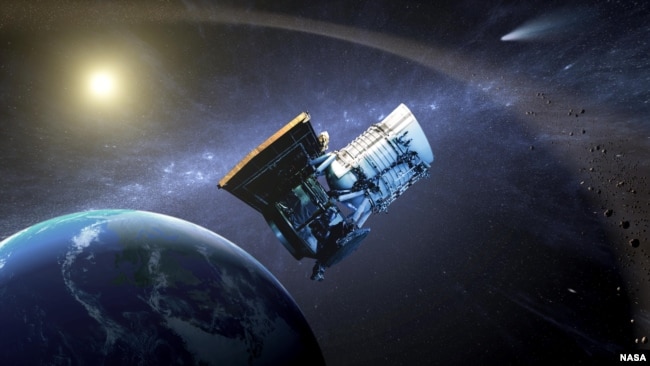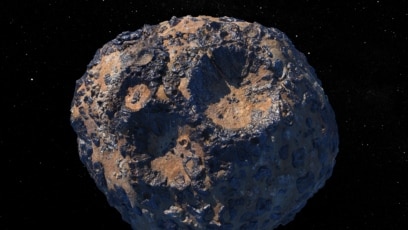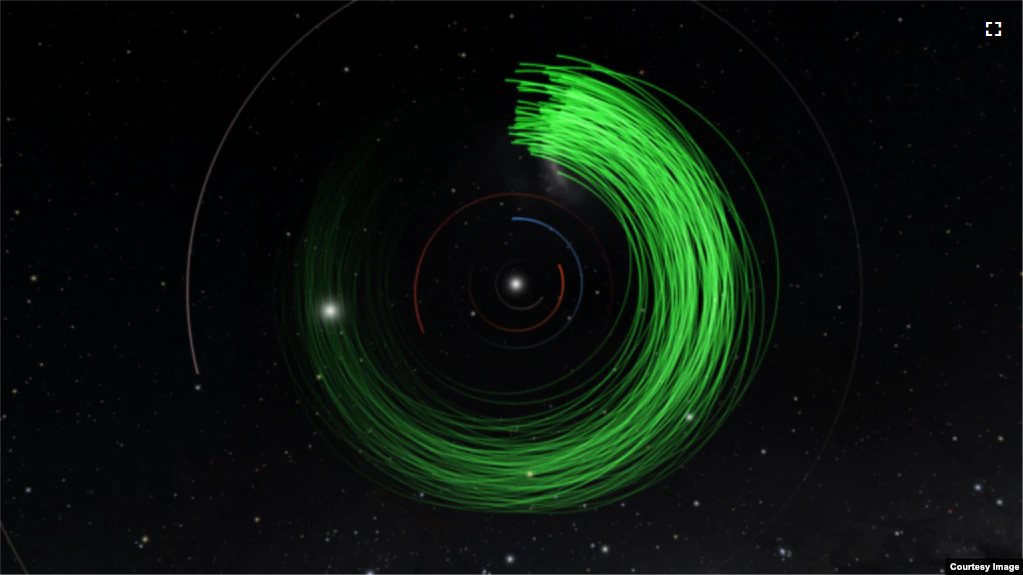Scientists have used a new tool to discover more than 100 asteroids that had not been identified before.
The method uses a complex computing method called an algorithm to search for asteroids that were not discoverable in the past. They were not discoverable because existing telescopes and image examination tools could not recognize them.
Historically, the American space agency NASA has used powerful ground-based telescopes and its NEOWISE spacecraft to identify asteroids and other near-Earth objects. NASA also uses tracking systems to follow the movements of asteroids.
Scientists place a high importance on identifying and tracking near-Earth objects because some of them could present threats to our planet. With this in mind, NASA launched a spacecraft last November that aims to demonstrate a possible defensive method against asteroids that might threaten Earth.

The discovery of 104 new asteroids was recently announced by the American-based non-profit Asteroid Institute. The organization hopes the new asteroid search tool will lead to the discovery of many more asteroids in the coming years.
The Asteroid Institute is part of the B612 Foundation. The institute explains on its website that it aims to combine computer science, instrumentation and astronomy to find and track asteroids.
Ed Lu is the director of the B612 Foundation. He is also a former NASA astronaut. He praised the new tool in a statement announcing the organization’s latest finding. “Discovering and tracking asteroids is crucial to understanding our solar system, enabling development of space and protecting our planet from asteroid impacts,” Lu said.
The institute calls its discovery tool Asteroid Discovery Analysis and Mapping, or ADAM. This system uses the algorithm to “link points of light in different sky images that are consistent with asteroid orbits.”
The tool is trained to find asteroids based on existing data and to calculate their orbits well enough to be recognized by international astronomy organizations.
Lu said the ADAM tool and the algorithm together make it possible for “any telescope with an archive” to become an asteroid search telescope.
The Asteroid Institute worked together with the technology company Google on the project. Google says its cloud-computing system supported the computational power needed for the asteroid discovery system.
“We always dreamed of cloud computing becoming a true tool of science and the announcement of today’s and future asteroid discoveries show that this dream is becoming a reality,” said Scott Penberthy. He is the director of Applied AI at Google.
Researchers from the University of Washington also cooperated on the project. Joachim Moeyens is one of those researchers. He reported that he searched a 30-day window of images during the discovery operation.
The images came from the NOIRLab Source Catalog. The catalog is a collection of nearly 68 billion observations made by telescopes operated by the Arizona-based National Optical Astronomy Observatory between 2012 and 2019.
After making his first set of asteroid discoveries from the images, Moeyens sent his results to the Minor Planet Center. The NASA-supported center is an international body responsible for officially registering observed near-Earth objects. The center was able to recognize and confirm Moeyens’ 104 asteroid discoveries.
Moeyens and other researchers say the latest identifications are just the beginning. They predict their asteroid search tool will result in thousands of new discoveries in the future.
I’m Bryan Lynn.
Bryan Lynn wrote this story for VOA Learning English, based on reports from The Asteroid Institute, the University of Washington and Google.
We want to hear from you. Write to us in the Comments section, and visit WWW.VOA-STORY.COM
Quiz – Scientists Use New Technology Tool to Discover New Asteroids

Start the Quiz to find out
___________________________________________________________________
Words in This Story
asteroid – n. a rocky object that goes around the sun like a planet
track – v. to record the progress or development of something
crucial – adj. extremely important or necessary
impact – n. an act or event in which something strikes another thing
consistent – adj. always behaving in a similar way
calculate – v. to discover an amount or number using mathematics
archive – n. a collection of historical documents that provides information about the past, or a place where they are kept
catalogue – n. a listing of things combined into one source
